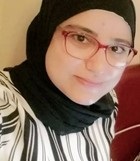“Synthesis and assessment of a micro-structured fluorescent architecture channel waveguide / diffraction grating developed by sol-gel”
Keywords:
sol-gel, photolithography, channel waveguide, diffraction gratings, fluorescence, dissolved oxygen, microfluidic device
cliquer pour voir la liste des membres du jury/clic here for the jury membersAbstract
The thesis addresses a growing topic, optical chemical sensors, whose flagship application is the real-time monitoring of cell cultures in biomedical field. These sensors operate by quantifying physicochemical parameters, e.g. the concentration of dissolved oxygen (DO), which is an indicator of cell formation, growth and viability in an aqueous medium. Many devices are already on the market, but research remains intensive to improve their performance. This one deals in particular with the sensor miniaturization, as it allows enhanced measurement speed, easier handling and analysis of reduced liquid volumes. The sensor principle is based on variations in the fluorescence signal when a fluorophore, encapsulated in a matrix permeable to gaseous or ionic species and excited to a suitable wavelength, is contacted with an analyte, e.g. DO in an aqueous medium. This thesis aims at studying a new sensor configuration based on the sol-gel fabrication of channel waveguides doped with a fluorophore sensitive to OD. These waveguides are endowed with diffraction gratings at their input and output in order to inject and extract the excitation and emission signal, respectively. This work particularly highlights the potential of a high refractive index sol-gel TiO2 based resist, which can be imprinted through a single photolithography step (selective insolation / development) to form a given pattern. Various optimizations have been investigated in order to implement a reproducible elaboration process leading to uniform channel waveguides and diffraction gratings, while relying on opto-geometric characterizations. Fluorescence measurements were then carried out in air in order to validate the efficiency of the excitation signal injection, guided propagation of the excitation and emission signal in the waveguide core, and extraction of the emission signal toward a photo-detector. Finally, this architecture was introduced in a microfluidic system enabling to carry out fluorescence measurements in an aqueous medium at variable oxygen concentration according to an appropriate procedure.
Membres du jury/ Jury members :
|
Dr. |
Audrey POTDEVIN |
Institut de Chimie de Clermont-Ferrand |
Rapporteur |
|
Dr. |
Sandrine PERRUCHAS |
CHARGE DE RECHERCHE, Institut des Matériaux de Nantes Jean Rouxel |
Rapporteur |
|
Prof. |
Isabelle GAUTIER-LUNEAU |
Lab. Louis Néel grenoble |
Examinatrice |
|
Dr. |
Michel LANGLET |
DIRECTEUR DE RECHERCHE, Université Grenoble Alpes |
Directeur de thèse |
|
Dr. |
David RIASSETTO |
LMGP Grenoble-INP |
Co-directeur de thèse, membre invité |
|
Dr. |
Davide BUCCI |
IMEP-LAHC |
Co-directeur de thèse, membre invité |
Grenoble INP Phelma-Minatec
3 parvis Louis Néel - 38000 Grenoble
Accès : TRAM B arrêt Cité internationale
Free entrance - No registration



